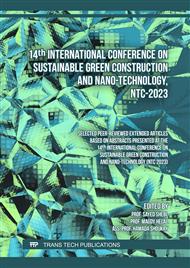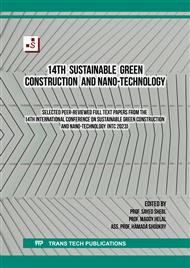p.1
p.15
p.25
p.37
Design Criteria for Designing Sustainable Commercial Buildings in Hot and Arid Climate
Abstract:
As climate change effect on our daily life is clear, and the awareness of greenhouse gases damages is increased, architects and many developers necessitate green and sustainable buildings design by focusing on energy efficiency, avoiding harmful materials, and taking care of indoor air quality to construct environmentally friend buildings. Also, adopting energy efficiency strategies and renewable energy applications in buildings design generally and particularly in commercial buildings will drop the produced amount of CO2 emissions, as well as operational emissions and embodied emissions are attributed to the building materials and energy required for construction.This research is proposing energy efficient commercial building design proposal as an approach to green architecture in Egypt. First, commercial buildings impact is studied, then choosing energy simulation tool to assess the solution as DesignBuilder software, the design of commercial building proposal respect the triple bottom line of sustainability, to introduce innovative, efficient and environmental building design respecting users’ needs and achieve high economic value, finally, after simulating the building model in DesignBuilder to reach the highest energy saving and ensure the thermal comfort for users, the design is evaluated by LEED criteria to measure the environmental impact of the building and indicate how this design is successful or not.Finally, this research focuses on proposing a design design cliteria and apply it on designing new commercial buildings to enhance the building performance and being environmentally integrated based on design design cliteria that represent the three major design principles and they are Nature, Culture and Art. Nature for respecting and integrating with the environment, Culture for respecting the location and user’s needs, Art for offering a unique architecture design leave strong mental image impression.
Info:
Periodical:
Pages:
15-23
Citation:
Online since:
June 2023
Authors:
Keywords:
Price:
Сopyright:
© 2023 Trans Tech Publications Ltd. All Rights Reserved
Share:
Citation:



